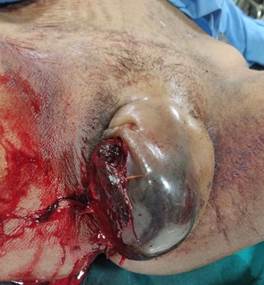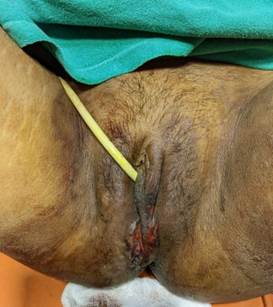Puerperal genital haematomas can be anatomically classified as infralevator or supralevator. Infralevator haematomas occur below the levator ani muscle, example around vulva, perineum and lower vagina. They are associated with vaginal birth. Supralevator haematomas usually form in the broad ligament. They can be an extension of a cervical, vaginal or uterine tear. They are less common than infralevator haematomas. Supralevator haematomas may occur after spontaneous birth, but more commonly occur following operative vaginal birth or a difficult caesarean section [9].
Vulva is supplied from external pudendal and internal pudendal artery. The injury to labial branches of the internal pudendal artery, which is located in the superficial fascia of the anterior and posterior pelvic triangle, can cause vulval hematoma [10].
Excessive perineal pain is a classical symptom and it should prompt examination. The most important factor in correct diagnosis is clinical awareness. Delay in diagnosis and thus management may result in adverse maternal outcome.
Management of vulval hematomas depend on maternal hemodynamic stability, hematoma size and availability of medical resources. Resuscitative measures should be considered the first line of treatment. The extent of the blood loss is often underestimated and a high index of suspicion is required. Aggressive fluid replacement and assessment of coagulation status is essential if there is heavy bleeding or signs of hypovolaemia. Blood should be available for transfusion. A urinary catheter is generally advocated to monitor fluid balance and to avoid possible urinary retention resulting from pain, oedema or the pressure of a vaginal pack [10].
Small, static haematomas (<5 cm in diameter) can be managed conservatively (ice packing, empiric antibiotics, pain medication and blood transfusion when deemed necessary) [ 11].
Large (>5 cm) vulval haematomas are best managed with surgical evacuation, primary closure and compression for 12–24 hours. Adequate anaesthesia is mandatory. The clot should be evacuated and any apparent bleeding points ligated [10].




